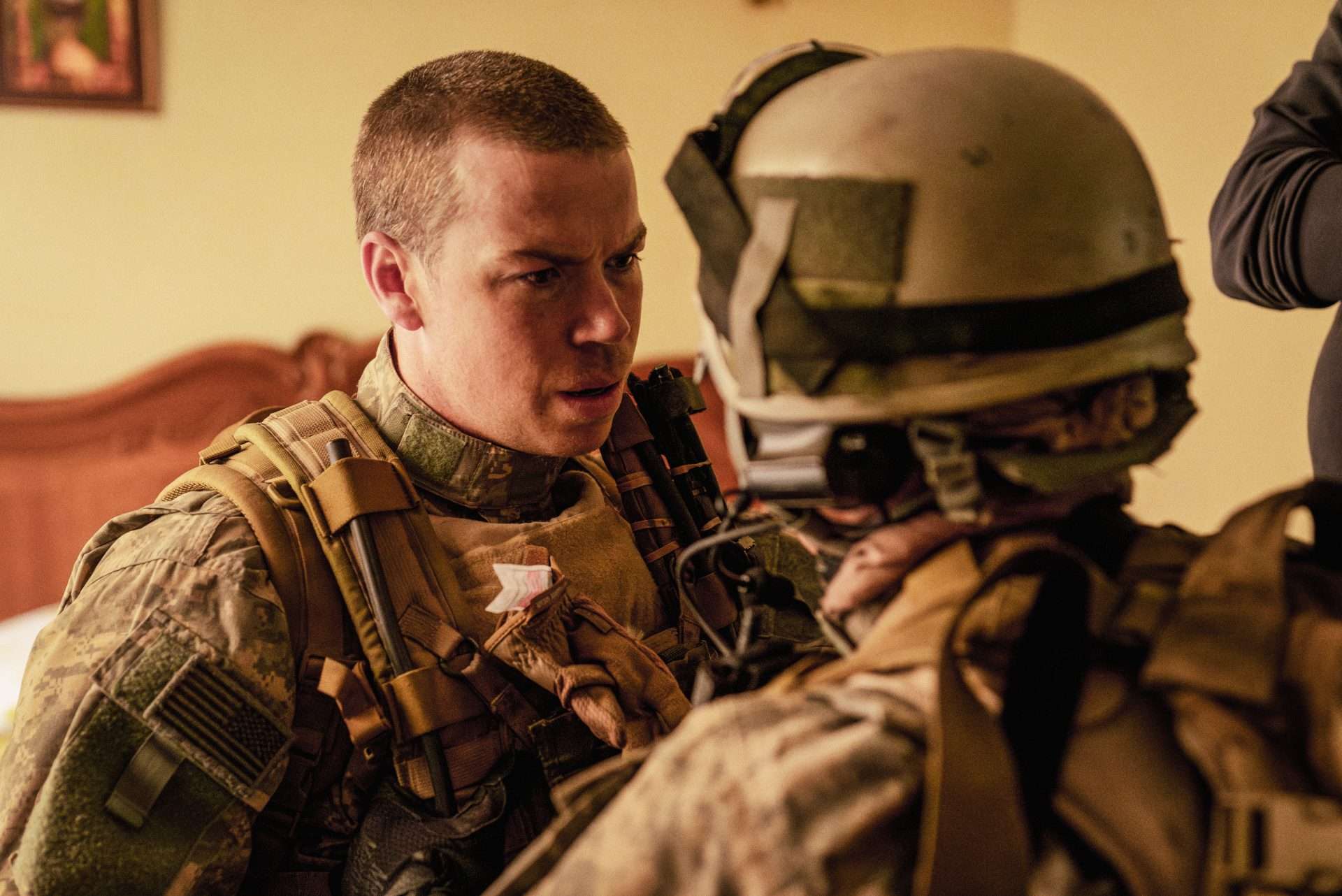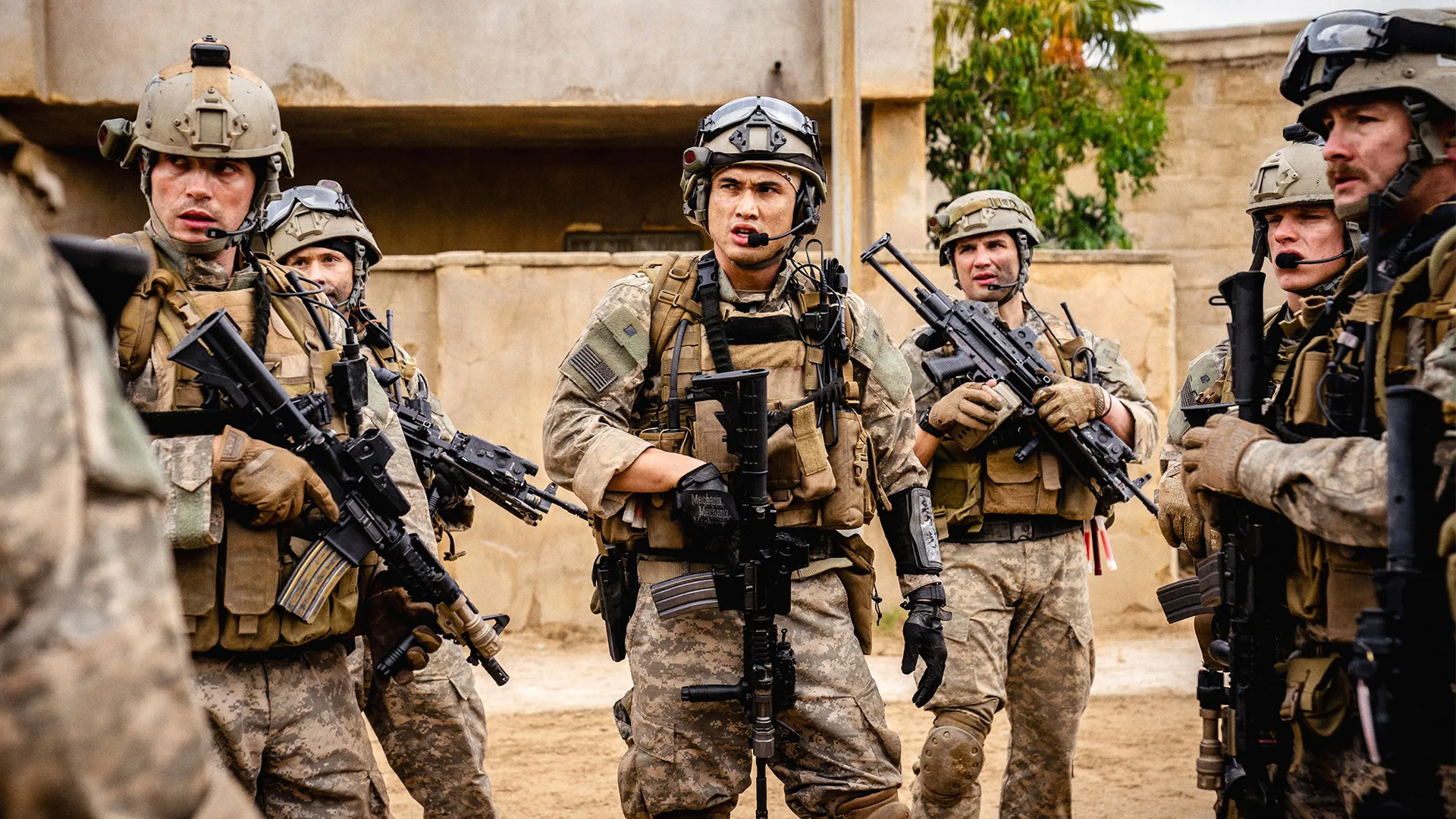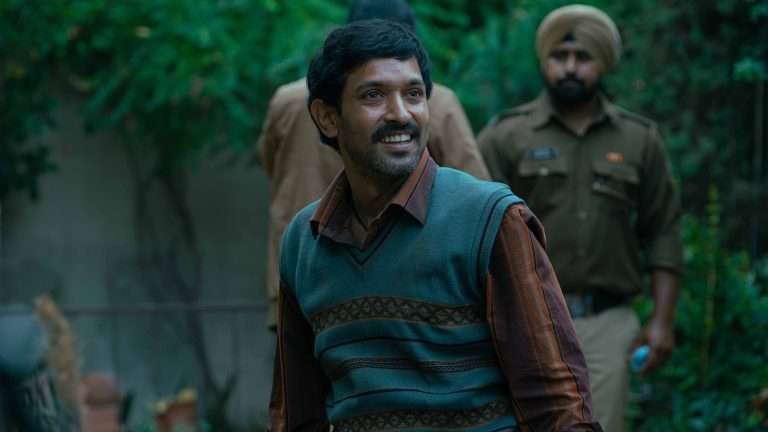The opening scene of “Warfare” (2025) features a group of largely interchangeable soldiers staring with lurid curiosity at the infamously suggestive music video for “Call on Me” by Eric Prydz. It’s an indulgent, intentionally provocative work of art designed to provoke a reaction, but those with moral obligations would be too engaged to ever dismiss it entirely as not being worthy of discussion. The soldiers watching share a collective sense of fascination, as if each is unable to determine if they are all gravitated towards the exhibitionist material, or if they’re all watching with a degree of irony.
These questions of intention, effect, and purpose are all relevant to Alex Garland’s latest feature, which marks the most dramatic shift in his filmography thus far. While Garland’s career behind the director’s desk started with the high-concept genre films “Ex Machina,” “Annihilation,” and “Men,” he pivoted towards realism with last year’s “Civil War,” an incendiary analysis of what America could look like from an outside perspective. While “Warfare” shares the same brutal, unsavory visceral qualities of “Civil War,” it doesn’t rely on Garland’s aptitude for worldbuilding. The film is co-directed by the former U.S. Navy Seal Ray Mendoza and serves as a recreation of his experiences in a particularly gruesome standoff with insurgent forces during the Iraq War of 2006.
“Warfare” has the same relentless, unforgiving quality of modern war classics like “Black Hawk Down” and “The Hurt Locker,” but the scope is far more granular. Shot in real time, “Warfare” is confined to just one village as a group of SEALs monitors a potential terrorist cell before being overwhelmed by enemy forces. There’s a voyeuristic sense of observation that Garland commits as he drops the viewer into a situation with little context or background on the character.
While the lack of political rhetoric in “Civil War” was the point, “Warfare” deprives the audience of any established narratives in order to focus on the macro tasks at hand. It’s only after watching 95 minutes of cacophonic screams and ear-shattering gunfire that viewers are left to question what was accomplished, and why this type of violence has been so briskly ignored.

To say that “Warfare” has characters would be misleading, as the film aims to recreate what each of the men in combat went through with a hypnotic attention to detail. However, the fact that it is taken from Mendoza’s memory means that Garland doesn’t have the opportunity to hint at pieces of backstory or expand the character development beyond what actually happened. While some may view that as an inherently uncinematic technique, it’s perhaps the only method in which Garland would have been able to bring this story to life. Documentary footage does not exist, and any amount of videotaped testimonies can’t capture the enrapturing experience of watching this intense situation unfold.
While reactions to what is depicted on screen may largely depend on the perspective that the viewers themselves have on the Iraq War, Garland can’t be faulted for any of the film’s technicals. “Warfare” has a remarkable degree of scale, as it is made clear where exactly each character is in relation to one another, which threats are looming, and what exactly the collateral damage entails. The Battle of Ramadi was not particularly complex, as the same threat that existed at the beginning of the film was there at the end. What takes up the majority of the running time is seeing the characters forced to solve the ramifications of each round of gunfire, as they must maintain a shaky hideout, protect their local translators, and administer medical treatment to their wounded brothers-in-arms.

Garland has made a film perfect for the IMAX experience, as the sharp moments of kineticism are much more impactful when the audience is totally enraptured with the imagery. There’s significant tension that builds throughout the first act of “Warfare” because it is so procedural and minimalistic, forcing the viewers to quench their anxieties by hyperfocusing on seemingly insignificant details. It’s as if Garland has taught his audience to be as actively aware of the potential threats as the characters, making the eventual carnage and mayhem that emerge much easier to follow. Although Garland rarely makes room for stylism, a few key instances that reflect the characters’ blurred vision or wounded eardrums are utterly traumatizing.
Although the role of the cast was more of recreation than it was interpretation, the ensemble is uniformly excellent, as they blend in with one another the same way a real NAVY Seal unit would. Joseph Quinn is a particular standout. The wounds suffered by his character force him to show the levels of agony and despair that escalate as the situation worsens. Will Poulter also manages to find a subtle, yet affecting way to showcase post traumatic stress disorder that emerges in real time. If there’s one character that provides any sense of comfort, it’s Charles Melton in the role of the assistant officer, Jake; whether he’s actually in control of the situation or simply feigning authority in order to ease his men’s anxieties is unclear, but Melton shows how a commanding voice can unite a group during a period of confusion.
Given that “Warfare” is so narrow in what it chooses to highlight, it is natural to question what was significant about this specific incident that Garland felt needed to be given a cinematic recreation. Footage near the end of the film shows the extent to which he achieved authenticity, and a few unidentified characters within the closing montage suggest that this story isn’t one that the participants involved with are particularly willing to celebrate.
While access to Mendoza and his memory may have been enough to intrigue Garland, there’s something radical to the insignificance of “Warfare.” People were killed, buildings were destroyed, and alliances were forged, but there’s no hint as to what was solved in this bloody crossfire, nor are there any lessons that seemed to be learned. This is perhaps Garland’s analysis of the Iraq War and why he felt it was important to crystalize what happened before dramatic interpretations could bend the truth for the sake of self-serving narratives. To call “Warfare” a work of entertainment would be a misnomer, but it is both a brilliant work of craftsmanship and a necessary wake-up call.




![Caged [2021] Review – An uninspiring look at the psychological impact of solitary confinement](https://79468c92.delivery.rocketcdn.me/wp-content/uploads/2021/09/Caged-2021-Movie-768x435.jpg)
![Mintgumri [2021]: ‘DIFF’ Review- Full of extraordinary, overwhelming gentleness, but never forgets its bracing honesty](https://79468c92.delivery.rocketcdn.me/wp-content/uploads/2021/11/Mintgumri-Short-Film-Review-1-768x433.jpg)
![By Night’s End [2022] Review – A timid and often silly home-invasion movie bodged down by lack of tension](https://79468c92.delivery.rocketcdn.me/wp-content/uploads/2022/07/By-Nights-End-Movie-Review-1-768x326.jpg)